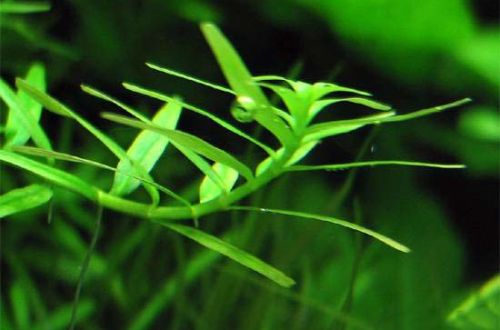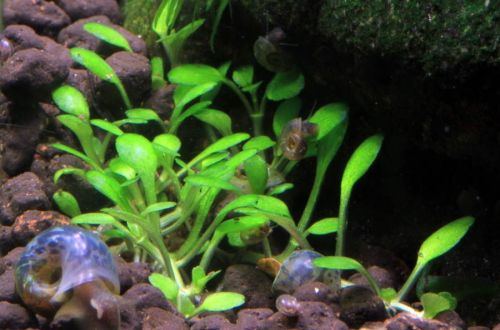
weeping moss
Weeping moss, scientific name Vesicularia ferriei. It occurs naturally in the eastern regions of China and Japan. It grows in lowlands on wet substrates along streams, rivers and other bodies of water. Able to grow underwater. When growing, it forms hanging thickets, which resembles a miniature weeping willow.
The underwater form forms strongly branching curving shoots covered with many small leaves. In low light, there is a tendency for horizontal growth.
This type of moss is often confused with other similar species, such as Pilo moss. Both types are popular in natural aquascapes for decorating driftwood to add depth and contrast to the design.
Unlike other types of weeping moss, it does not attach well to the surface, its rhizoids cannot penetrate deeply into the material, therefore it requires separate attachments, for example, it is tied with fishing line.
Able to grow in various conditions in a wide range of temperatures and values of hydrochemical parameters. Does not need fertilizers and additional introduction of carbon dioxide. Regardless of the external environment (even the most favorable one), it grows slowly under water.





